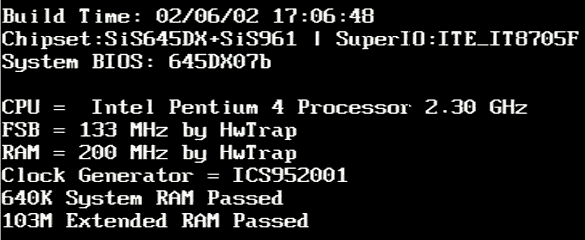Unstoppable: DDR400 vs. Rambus
Full Speed Ahead: DDR400 Vs. RDRAM (PC1200), Continued
Currently, only the SiS 645DX chipset (for the Pentium 4) supports an asynchronous memory clock of 200 MHz - in the meantime, the FSB clock runs at 100/133 MHz. There's still no DDR400 platform for the AMD Athlon. This picture shows you details from the BIOS of the reference board from SiS.
DDR memory alone is no longer the end-all, be-all, and this is illustrated by the development in RDRAM modules. Soon, modules with 533 MHz will be available - our test samples from Samsung make a positive impression. The introduction of PC1200 shows that the company Rambus is not ready to die yet. The real question is, which memory technology will come out stronger in the near future? Rambus doesn't exactly hold the cards in its hands, since Intel, its main sponsor, let itself be influenced by the market, with the result that it is now marketing DDR as the ultimate technology. However, the Pentium 4 platform has an optional Rambus interface and the corresponding chipset support. AMD CPUs work with DDR memory or outmoded SDRAM modules only.
DDR400 memory in action with the SiS 645DX. The exact clock speed of the Pentium 4/2400 is not shown.
In this article, we'll show you how fast DDR400 memory really is in comparison to RDRAM with 400 MHz, 533 MHz and 600 MHz. Furthermore, we'll bring you extensive benchmarks that reveal the differences between DDR400, DDR333, DDR266 and DDR200.
Get Tom's Hardware's best news and in-depth reviews, straight to your inbox.
Current page: Full Speed Ahead: DDR400 Vs. RDRAM (PC1200), Continued
Prev Page Introduction Next Page Confidential: Rambus Develops Memory Interface For SiS
